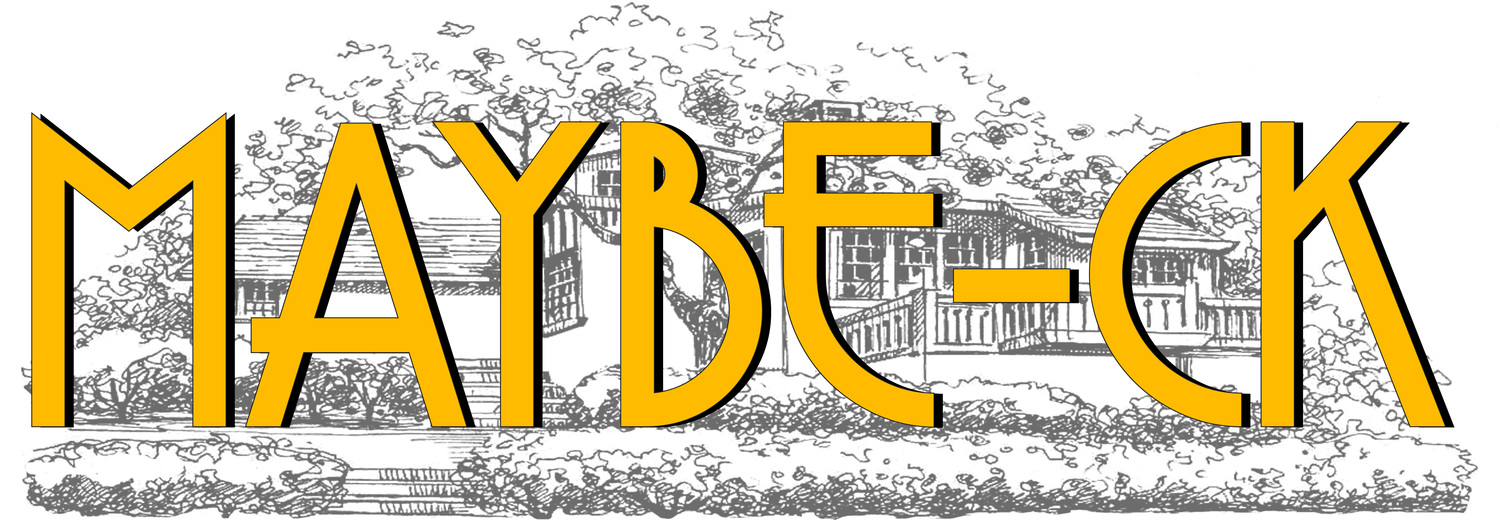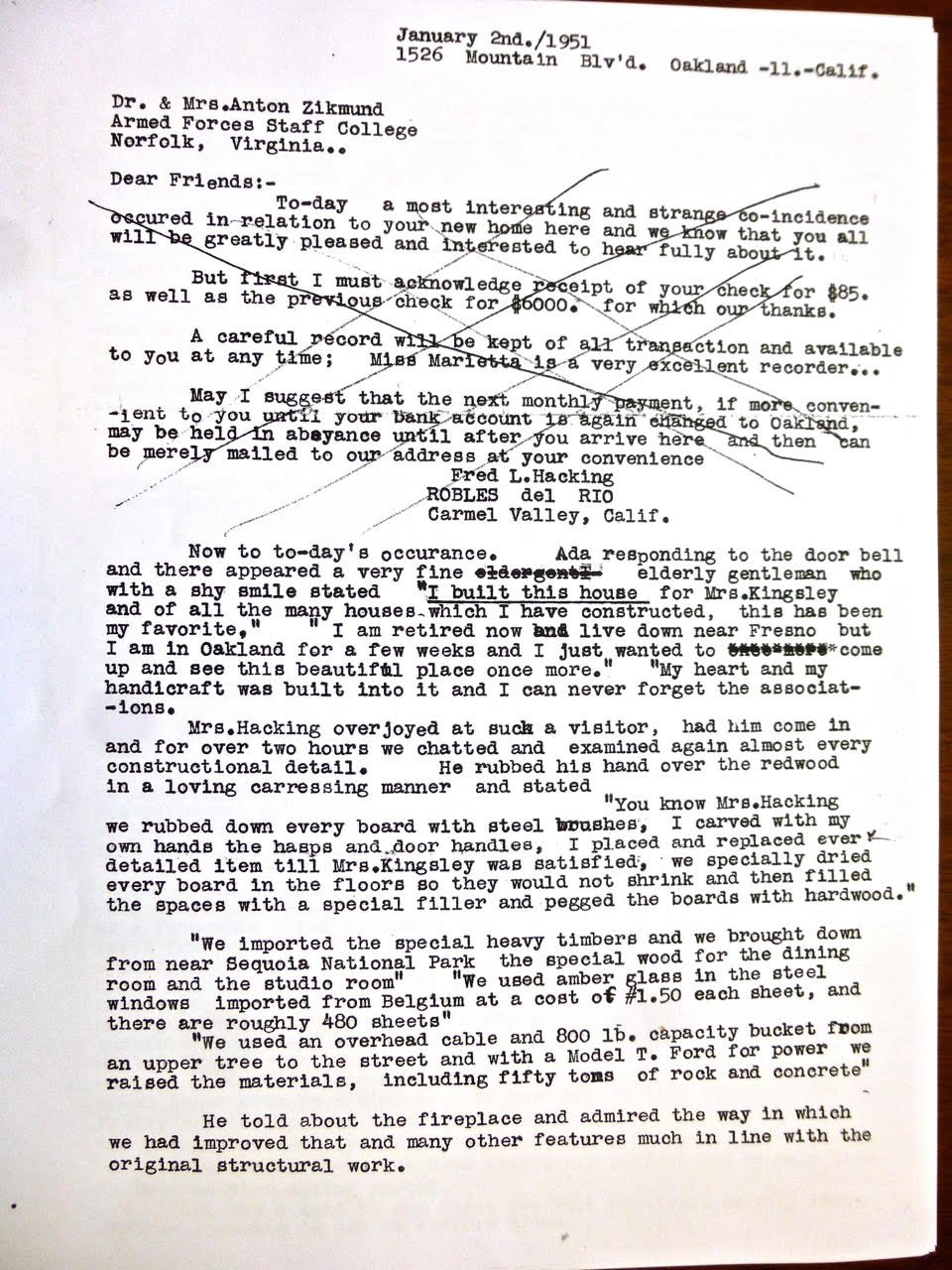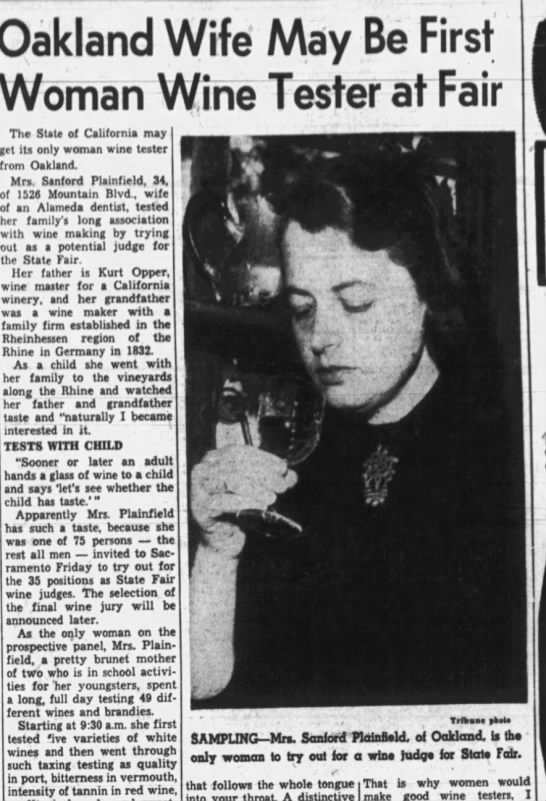Maybecks for Sale in Montclair! Tracing Ownership Pt. 2
In the last post I wrote about how I traced all the owners of the house - here’s that list again
1927-1940: Mrs. Mary B Kingsley
1941-44: Dr. Woodburn K. Lamb and family
1945: [Unknown]
1946-51: Fred and Ada Hacking
1951-53: Dr. Anton Zikmund and Family
1954-59: Sanford and Ruth Oppenheimer Plainfield
1960-2015: Teddy V Hughes, Hughes Trust
2015: Me
What I also found around the same time of tracing the ownership was some VERY interesting for sale ads for Maybeck houses in Montclair. Wait a second - what Maybecks in Montclair? There are no officially recognized Maybeck houses in Montclair. So how is this possible?
Sale Records
Mrs. Kingsley had the house built in 1927-28 and lived here until she was 70 and then moved out. I did not find a sale record but I did find this 1940 furniture sale. The 1940 Census also lists her celebrity astrologer daughter Myra living there - I think that Myra was helping her move out (especially since she died in 1943 I suspect her health was going downhill). The house has a lot of stairs and is not easy to live in if you have trouble walking. I’m guessing she sold the house with the ol’ sign in the yard because there are no sale records that I can find. KINGSLEY 1927-40
The first year of actual for-sale ads for our house, 1944, which would be Dr. Lamb selling the house. I have a gap between the phonebook listings of Lamb ‘44 and Hacking ‘46. I don’t know if the house sat for a year empty in 1945 or if someone I haven’t yet found lived here for one year. LAMB 1941-44
Dr. Lamb trying to sell the house July 30th, 1944
It’s possible Dr. Lamb listed the house for sale in ‘44 and moved away and it sat empty or he rented it until it sold somewhere in ‘45 or 46 when it was purchased by the Hackings. Fred and Ada Hacking lived here until 1951. Hacking to Zikmund is where we get the “proof letter” below. HACKING 1946-51
Here you can see Maybeck mentioned in the first paragraph of page 2.
The proof letter, which I believe tells the true story of the construction of our house - describes a visit to the house by the builder Volney Rowland in 1951. Rowland and Maybeck were both getting up there in years and they both died in the mid ‘50s so it seems like Rowland wanted to see his “favorite house” one more time.
I don’t have for sale ads from 1951 but you can tell the house is being sold from Hacking to Zikmund by the information in the proof letter.
Zikmund selling the house in 1953.
In 1953 I found an ad for a Maybeck for sale in Montclair. This is interesting because there are no officially recognized Maybeck designs in Montclair. Here’s what I think happened - Zikmund decided that the visit from Rowland to the Hackings was enough proof to sell the house as a Maybeck design, using the Hacking letter. In fact, Hacking, Rowland and Maybeck were still around so someone buying the house could track them down if they wanted more information. I believe the reason that I have the Hacking-Zikmund letter is because it was passed down the string of buyers and used as evidence that it was a Maybeck. The above ad doesn’t mention our address but there are no other wannabe Maybecks around here and the date lines up with the change of ownership of the house via the phonebook. ZIKMUND 1951-53
Zikmund sold the house to Sanford and Ruth Oppenheimer Plainfield. PLAINFIELD 1954-59. Here’s what I believe is one of their for sale ads:
Again the listing doesn’t have the address but the timing matches up. The Plainfields were selling the house in 1959, ultimately to Hughes who is listed at our house in the phonebook in 1960. Once again the Hacking-Zikmund “proof letter” is being used to sell the house. At this point, Rowland and Maybeck are dead, but Hacking is still alive, living in Carmel. Hacking, Zikmund, and Plainfield all believe that the house was designed by Maybeck - and the proof letter is still the only piece of paper connecting Maybeck to the house. Furthermore, the Hughes family seemed to earnestly believe the house is designed by Maybeck, and they passed the letter on to me. And now, following in their footsteps, I earnestly believe that the house is designed by Maybeck - but the standards for claiming such things have changed. Following a high profile lawsuit where a house was wrongly sold as a Maybeck and the sellers were sued for substantial damages, the standards have increased. Before selling a house as a Maybeck design, you better have ironclad proof. Unfortunately, Hacking, Zikmund, Plainfield, Hughes, Rowland and Maybeck are all dead. All that remains is the letter - but what’s missing are the people who gave it weight. Hacking died in ‘69, well into the Hughes ownership. That makes me the only owner so far who couldn’t do something to verify the letter.
I looked through a lot of Oakland Tribune classified through Newspapers.com searching for Maybeck. I am reasonably sure that all of these ads selling a Maybeck in Montclair are talking about our house because they line up with our house’s features and the correct timeframe in the change of ownership. Like I said, Montclair is small and there aren’t a lot of Maybeck lookalikes - not the way there are in Berkeley. The next step of this investigation is to look in the Mason-McDuffie archives at the Bancroft library and see if I can find some of our listing documents from 1959 relating to the last ad shown above.





















